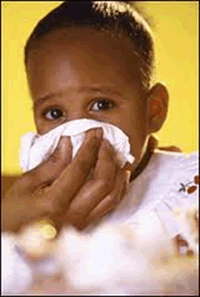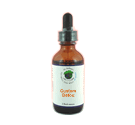 Arthropod/Vector
Bacteria
Chemicals
Fungus /Mold
/ Yeast Metals Parasites Virus Other Arthropod/Vector
Bacteria
Chemicals
Fungus /Mold
/ Yeast Metals Parasites Virus Other
|
Respiratory Syncytial
In temperate climates there is an annual epidemic during the winter months. In tropical climates, infection is most common during the rainy season. In the United States, 60% of infants are infected during their first RSV season, and nearly all children will have been infected with the virus by 2–3 years of age. Among those infected with RSV, 2–3% will develop bronchiolitis and need professional care. Natural infection with RSV induces protective immunity which wanes over time—possibly more so than other respiratory viral infections—so people can be infected multiple times. Sometimes an infant can become symptomatically infected more than once, even within a single RSV season. Severe RSV infections have increasingly been found among the elderly. For most people, RSV produces only mild symptoms, often indistinguishable from common colds and minor illnesses. The Centers for Disease Control consider RSV to be the "most common cause of bronchiolitis (inflammation of the small airways in the lung) and pneumonia in children under 1 year of age in the United States". Other RSV symptoms common among infants include listlessness, poor or diminished appetite, and a possible fever. Recurrent wheezing and asthma are more common among individuals who suffered severe RSV infection during their first few months of life. If RSV infection sets up a process that leads to recurrent wheezing or whether those already predisposed to asthma are more likely to become severely ill with RSV has yet to be determined. For some children, RSV can cause bronchiolitis leading to severe respiratory illness that requires hospitalization and in rare cases, can cause death. This is more likely to occur in patients that are immunocompromised or infants born prematurely. |
|


